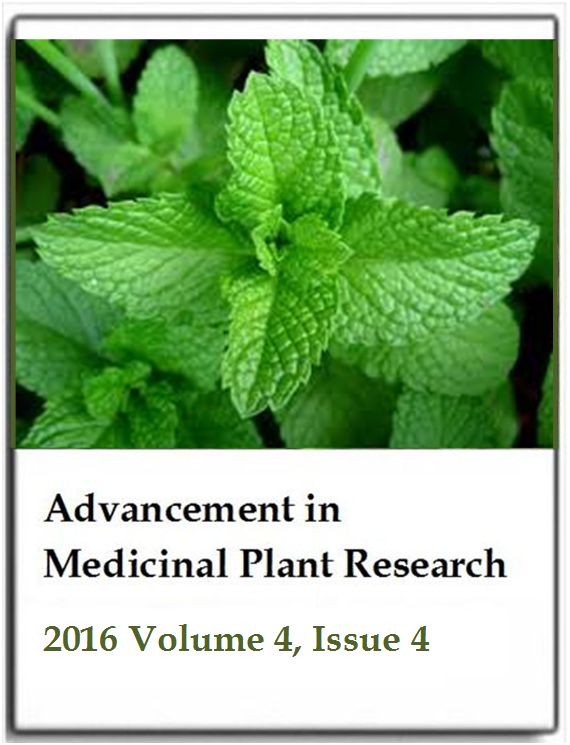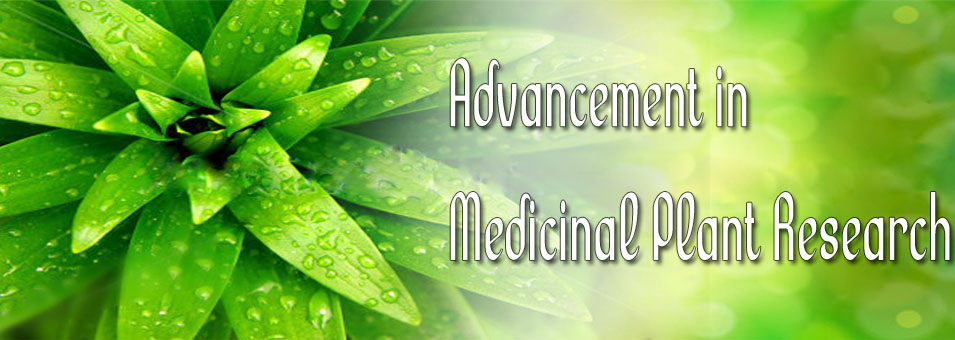Antibacterial activity, phytochemical screening and cytotoxicity of Hibiscus sabdariffa (calyx)
Mohamed I. Garbi, Mahmmoud S. Saleh, Ali M. Badri, Ibrahim T. Ibrahim, Suha F. Mohammed, Muddathir S. Alhassan, Ahmed A. Elshikh and Ahmed S. KabbashiAdvancement in Medicinal Plant Research
Published: October 28 2016
Volume 4, Issue 4
Pages 116-121
Abstract
The purpose of the paper was to investigate the in-vitro antibacterial activity, preliminary phytochemical screening and cytotoxicity [3-(4,5-dimethyl thiazol-2-yl)-2, 5-diphenyltetrazolium bromide-MTT assay] of methanol extract of Hibiscus sabdariffa L. (calyxes). The methanol extract of H. sabdariffa was tested against 11 clinical isolates bacteria and 3 standard bacteria, that is: 5 Gram positive bacteria (Corynebacterium diphtheria, Staphylococcus aureus, Enterococcus faecalis, Listeria monocytogenes and Bacillus cereus), 9 Gram negative bacteria (Proteus mirabilis, Proteus vulgaris, Pseudomonas aeruginosa, Pseudomonas aeruginosa (ATCC 27853), Serratia marcescens, Escherichia coli, Escherichia coli (ATCC 25922), Klebsiella pneumonia and Klebsiella pneumoniae (ATCC 70063) using the cup-plate agar diffusion method, preliminary phytochemical screening and cytotoxicity (MTT assay) was also performed with different concentrations (500, 250 and 125 µg/ml) and compared to the reference control Triton-x100. The methanol extract of H. sabdariffa (calyxes) exhibited inhibitory effects against most of the tested organisms with the zone of inhibition ranging from 14 to 36 mm in length. The largest inhibition zone was obtained for the Gram-positive against bacteria L. monocytogenes (36 mm), E. faecalis (33 mm), B. cereus (28 mm), C. diphtheriae (26 mm) and S. aureus (24 mm) while in case of Gram negative highest inhibition was observed against P. aeruginosa (ATCC 27853) (28 mm), K. pneumoniae (ATCC 70063) (25 mm), P. aeruginosa (23 mm), E. coli (20 mm), E. coli (ATCC 25922) and P. vulgaris (19 mm), K. pneumonia (18 mm), S. marcescens (17 mm) and P. mirabilis (14 mm). Preliminary phytochemical screening investigation for the methanolic extracts showed the presences of alkaloids, glycosides, flavonoids, tannins, sterols triterpens and phenols, while saponins was absent. In addition cytotoxicity (MTT-assay) verified the safety of the examined extract with an IC50 less than 100 μg/ml. The study concluded that H. sabdariffa (calyxes) proved to have potent activities against antibacterial activity in vitro with verified safety evidence for use.
Keywords: Antibacterial activity, preliminary phytochemical, cytotoxicity, Hibiscus sabdariffa.
Full Text PDF
